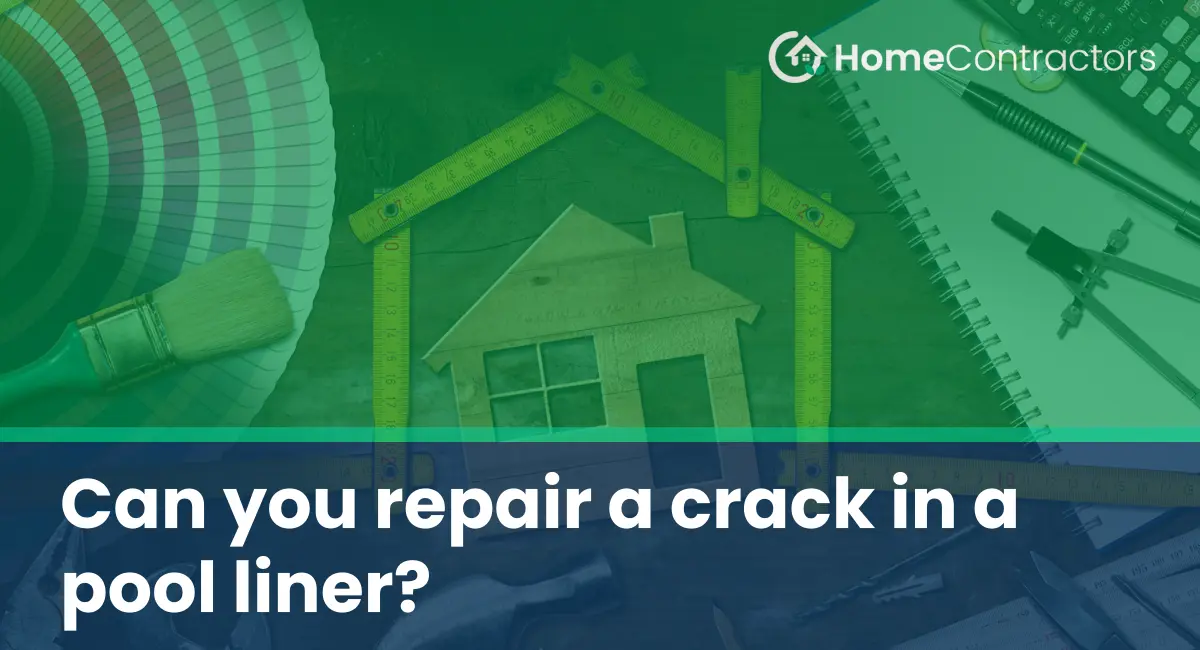Having a crack in your pool liner can be a major hassle, and if left untreated, it can lead to a host of other problems. However, the good news is that in many cases, it is possible to repair a crack in a pool liner, saving you the time and expense of replacing the entire liner. In this article, we will explore the different types of pool liners, the causes of cracks, and the various methods of repairing them.
Types of Pool Liners
There are three primary types of pool liners: vinyl, fiberglass, and concrete. Vinyl liners are the most common and affordable, while fiberglass and concrete liners are more durable and long-lasting. Each type of liner requires different repair methods for cracks, so it is important to identify the type of liner in your pool before attempting repairs.
Causes of Cracks in Pool Liners
Understanding the causes of cracks in pool liners can help prevent future damage. Some common causes include:
- Age and wear: Over time, pool liners naturally deteriorate and become prone to cracking.
- Improper installation: If a pool liner is not installed correctly, it may develop stress points that can lead to cracks.
- Freezing weather: In regions with cold winters, water trapped in the pool liner can freeze and expand, causing cracks.
- Chemical imbalances: High chlorine levels or pH imbalances can weaken the pool liner, making it more susceptible to cracks.
Repair Methods for Pool Liner Cracks
Vinyl Pool Liners
- Patch kits: Small cracks in vinyl pool liners can often be repaired using a patch kit. These kits typically include adhesive-backed patches that can be applied directly over the crack.
- Underwater sealant: For larger cracks or holes, underwater sealants specifically designed for vinyl pool liners can be used. These sealants are applied directly into the crack and dry to create a watertight seal.
Fiberglass Pool Liners
- Gelcoat repair: For minor cracks in fiberglass pool liners, a gelcoat repair can be performed. This involves sanding down the damaged area, applying a gelcoat repair compound, and sanding it smooth.
- Fiberglass fabric repairs: If the crack is more extensive, a fiberglass fabric repair may be necessary. This involves applying layers of fiberglass fabric and resin to reinforce and seal the crack.
Concrete Pool Liners
- Epoxy injection: Cracks in concrete pool liners can be repaired using epoxy injection methods. This involves injecting an epoxy resin into the crack to seal it and prevent further damage.
- Professional repairs: In some cases, particularly for large or complex cracks, it may be best to hire a professional pool repair company to assess and fix the problem. They may use specialized techniques such as shotcrete to repair the crack.
Preventing Pool Liner Cracks
To prevent future cracks in your pool liner:
- Regular maintenance: Properly maintaining your pool with regular cleaning, water balancing, and inspections can help identify and address minor issues before they escalate.
- Winterization: In regions with freezing temperatures, it is crucial to properly winterize your pool to prevent cracks. This includes draining the water below the level of the skimmers and using a freeze protector or antifreeze.
- Avoid sharp objects: Be cautious when introducing toys, pool accessories, or cleaning tools into the pool, as sharp objects can easily puncture the liner.
While a cracked pool liner may initially seem like a significant problem, it can often be repaired, saving you the cost and effort of replacing the entire liner. By understanding the type of pool liner you have and the causes of cracks, you can choose the appropriate repair method. Whether it’s using patch kits for vinyl liners, performing gelcoat repairs for fiberglass liners, or employing professional epoxy injection techniques for concrete liners, repairing a crack in your pool liner is feasible. By taking preventative measures and investing in regular maintenance, you can prolong the life of your pool liner and enjoy a worry-free swimming experience.
